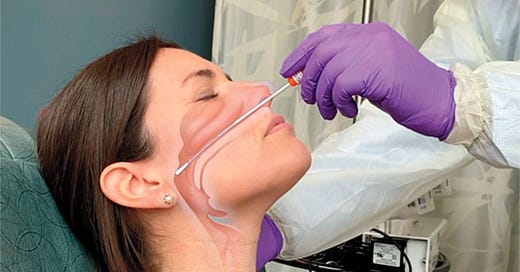One of the best parts about starting this newsletter has been the emails that I’ve been getting from readers. I appreciate your questions, feedback, and comments on the topics I’ve been writing about.
Please keep emailing me with your thoughts.
A major thing I’ve noticed is that there’s a lot of conversation about testing but not a lot of clarity here. I’m going to attempt to clear a few things up.
What is testing going to do? Why does everyone keep talking about how important it is to do testing?
Testing is the cornerstone of containing outbreaks. All of the countries that have successfully limited COVID outbreaks have done so by testing lots and lots of people.
If you test across a huge swath of the population (this is called mass testing), you find people who test positive, both with and without symptoms.
This allows you to do two important things:
You can also find the contacts of people who test positive and test those individuals. This is called contact tracing.
You can isolate individuals after a positive test. This is called isolation.
Testing, contact tracing, isolation. Repeat it with me.
Testing, contact tracing, isolation. One more time.
Testing, contact tracing, isolation.
I’m harping on this because it’s important. This is how you contain an epidemic without shutting down society.
And we have been doing a pretty shitty job of testing. We started testing too late, we are (still) testing too few people, we keep running out of testing materials, and we have no coherent national strategy to get better.
A report in the New England Journal of Medicine describes the situation well: “With more than 80,000 dead and no end in sight, our national efforts seem feebler and more halting than the 19th-century work of Florence Nightingale in the Crimean War.”
Wait, so we just test everyone over and over again? And then isolate everyone who’s been around someone positive. I don’t get it.
Testing isn’t just about knowing how many people get infected and how many people die.
Testing lets us refine our forecasting models. Testing lets us predict case surges to reveal upcoming needs for hospital staffing, ventilators, medical supplies, even mortuary services. Testing lets us perform targeted societal closures instead of global shutdowns.
I’ve said before in this newsletter that all models are wrong, but some models are useful.
When you have crappy and incomplete data to input into a model, usefulness wanes. Without good data, we’re left to rely on guesswork and assumptions. This is why the predictions about deaths and hospitals filling up have been constantly changing, and, in many cases, so inaccurate.
It’s no surprise that people are getting frustrated. Since we don’t have reliable data, we’re left with draconian and indiscriminate closures causing economic devastation.
In my view, rapidly scaling up and improving our testing is the only way we’re able to get back to any semblance of our regular lives before we have a vaccine.
Why would I get tested for COVID unless I develop symptoms? I’ve been staying at home any have not had contact with anyone. Plus, it sounds like a particularly nasty test.
You’re right in two ways - you aren’t particularly high risk (and probably don’t need to be tested) and the test isn’t pleasant.
For the test looking to detect active infection, a swab gets stuck all the way into the back of your nasopharynx. Here’s a picture and video.

I’ve actually had two patients get nosebleeds from the procedure that are so bad we’ve needed to put nasal packing in place.
Suboptimal.
This newsletter is starting to get long, and I didn’t get to all the questions I wanted to for today. Let’s save the rest for another installment.



